In this article, we’ll explore how HoloMedicine® Spaces enhances the flipped classroom model, its advantages for medical training in virtual reality, and practical ways for educators to integrate this approach into their curricula.
What is the Flipped Classroom?
Instead of spending class time on lectures, students review foundational materials at home, often through videos, readings, or digital resources. Class time is then devoted to interactive activities such as case studies, problem-solving exercises, and hands-on practice, fostering a more engaged and practical learning experience for medical training in virtual reality.

This model has proven beneficial in many fields, but it holds promise for medical training in virtual reality, where active learning is essential for mastering complex skills. By equipping students with essential knowledge before they enter the classroom, educators can use in-person time to deepen understanding through discussions, simulations, and real-life case analyses.
Why the Flipped Classroom Works in Medical Education?
Research has demonstrated that the flipped classroom model can enhance engagement, retention, and clinical preparedness in medical training. Key findings include:
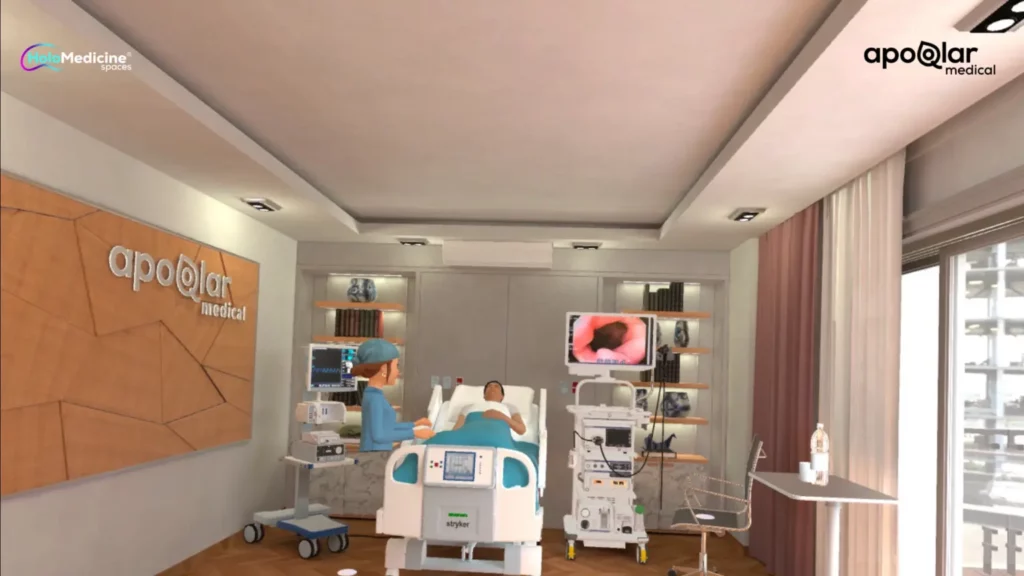
1. Improved Retention Through Medical Training in Virtual Reality
Active learning methods, as used in the flipped classroom, enhance understanding and retention of complex information. Medical training in virtual reality promotes deeper retention by fostering critical thinking and problem-solving skills essential in healthcare. According to Bucklin et al. (2021), these strategies lead to improved retention, making VR-based flipped classrooms particularly valuable in medical education.
2. Enhanced Engagement
By allowing students to self-pace through foundational materials before class, the flipped model promotes increased engagement. Students come to class prepared and ready to dive deeper into complex topics, leading to a richer educational experience.
3. Better Clinical Preparedness
A flipped classroom allows students to develop practical skills and real-world problem-solving abilities through case studies and clinical scenarios, preparing them more effectively for future medical practice. When combined with VR tools, these experiences can become even more immersive and impactful.
Implementing the Flipped Classroom with HoloMedicine® Spaces for Medical Training in Virtual Reality
HoloMedicine® Spaces is a Virtual Reality-based medical training platform that enhances the flipped classroom model by providing immersive, interactive learning experiences both before and during class. Here’s how HoloMedicine® Spaces can transform each stage of the flipped classroom process:
1. Pre-Class Preparation: Engaging with VR-Based Learning Materials
In the flipped classroom, students prepare for class by independently reviewing foundational material. HoloMedicine® Spaces offers a range of interactive resources that go beyond static readings or videos, enabling students to immerse themselves in complex medical content in VR.
3D Anatomical Models
Students can manipulate, rotate, and explore 3D models of human anatomy in HoloMedicine® Spaces, gaining a more profound understanding of anatomical structures and spatial relationships than traditional methods allow. This is one of the benefits of medical training in virtual reality.
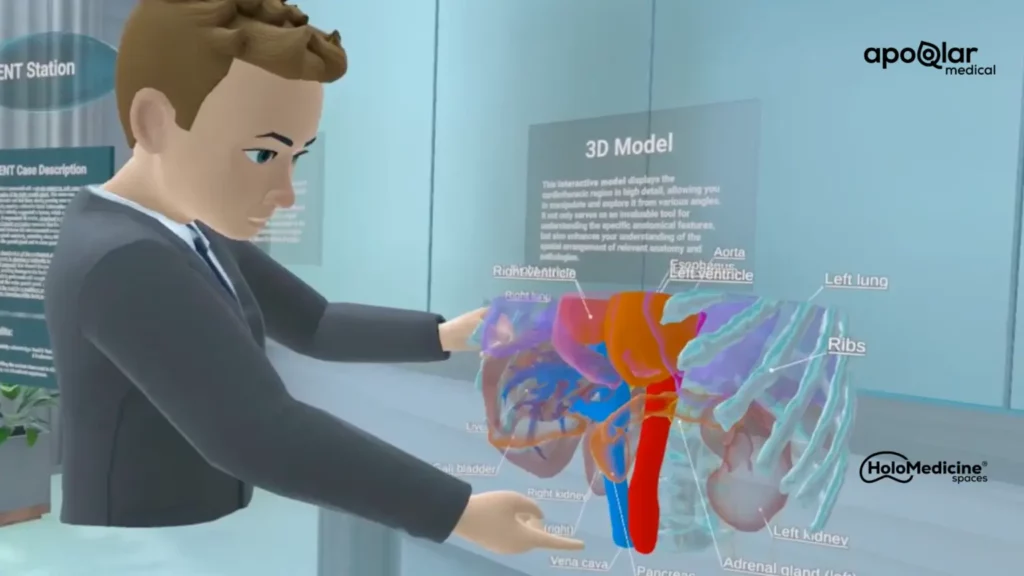
Annotated DICOM Images
With 3D and 2D DICOM imaging, students can view detailed medical scans that help them understand various pathologies and anatomical complexities. This visual engagement with real medical data enhances comprehension before any in-class discussions.
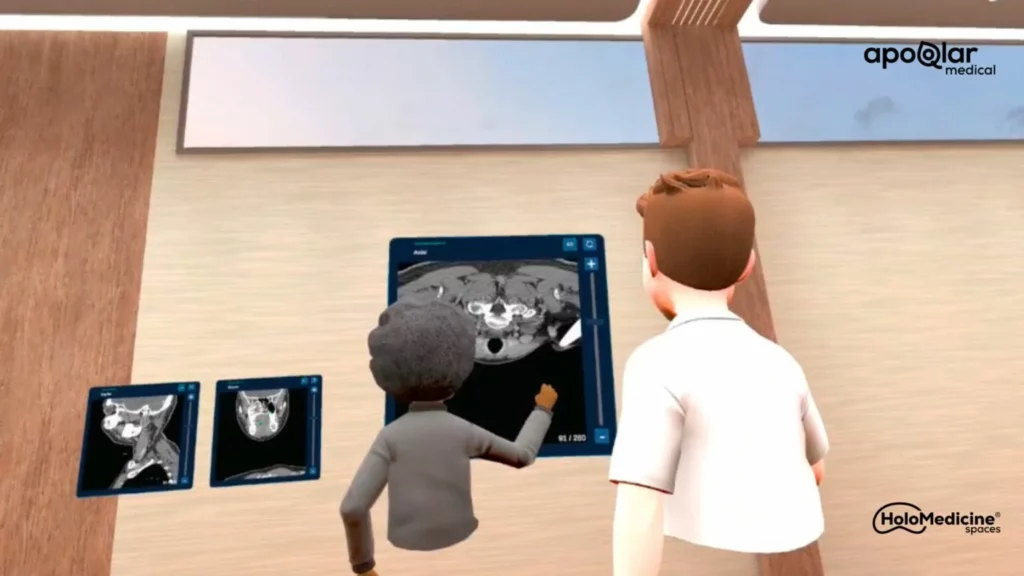
360-Degree Clinical Videos
HoloMedicine® Spaces offers immersive videos that place students in real-life clinical environments, such as operating rooms or patient consultations, helping them prepare for hands-on experiences by observing real-world procedures in VR.
These pre-class activities help students familiarize themselves with foundational concepts and complex structures, making them more prepared for in-depth discussions and practical exercises during class time.

2. Interactive and Applied Learning: Bringing Theory to Life in Class
Once students have acquired a solid theoretical foundation, HoloMedicine® Spaces enables educators to transform in-class sessions into engaging, hands-on learning experiences. The Virtual Reality (VR) e-medical training platform supports various collaborative and interactive activities that bring medical theory to life in realistic clinical scenarios.
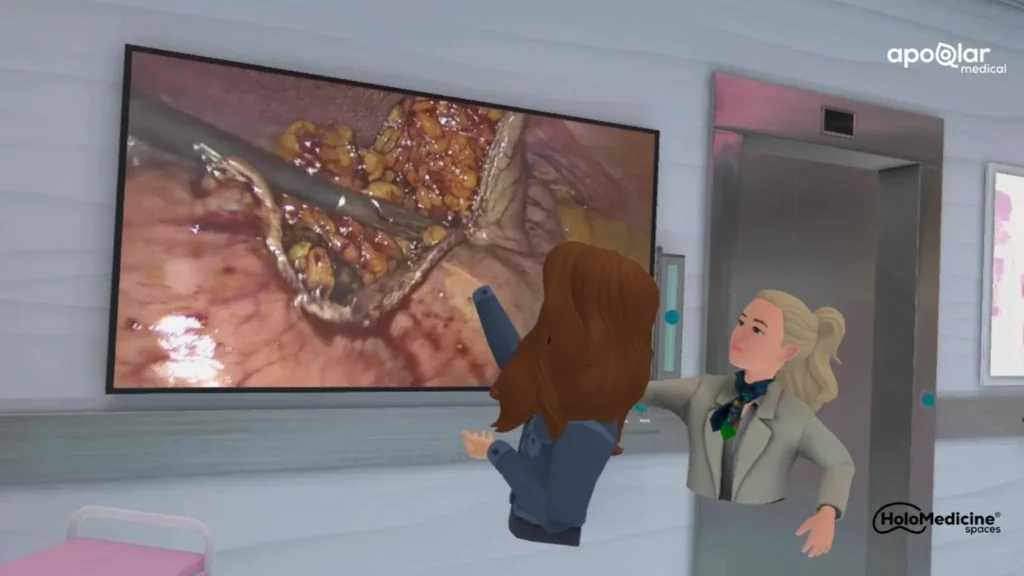
Case-Based Learning
Students can collaboratively analyze clinical cases in VR, working together to diagnose virtual patients, interpret imaging data, and develop treatment plans. This hands-on practice helps them hone clinical reasoning skills in a controlled, immersive environment.
3D Surgical Planning
With HoloMedicine® Spaces 3D holographic models, students can engage in surgical planning exercises, analyzing anatomical structures, and strategizing approaches with their peers. This type of in-depth practice is invaluable for students preparing for surgical specialties.
Procedure Simulation
HoloMedicine® Spaces offers procedure simulations that allow students to practice medical techniques in a risk-free virtual environment. By performing procedures virtually, students gain experience that prepares them for real-life applications without the risks associated with live patients.
These in-class experiences emphasize collaboration, clinical reasoning, and procedural practice, equipping students with practical skills that go beyond textbook knowledge.
3. Expanding Access Through Remote Collaboration
HoloMedicine® Spaces is designed for both in-person and remote interactions, facilitating a global learning community. This is especially beneficial in the flipped classroom model, as it allows students to collaborate and learn with peers and mentors from different locations, gaining diverse perspectives and insights.

Peer-to-Peer Interactions
Through HoloMedicine® Spaces real-time remote collaboration features, students can work with peers from other institutions or even other countries, sharing their unique insights and learning experiences.
Global Mentorship for Medical Training in Virtual Reality
HoloMedicine® Spaces also supports remote mentorship, allowing students to receive guidance and feedback from experienced educators and clinicians regardless of geographical barriers.
This remote, collaborative approach not only enhances learning outcomes but also builds a global network of future healthcare professionals who are well-prepared to meet the demands of modern medical practice.
4. Personalized Learning Experiences for Medical Training in Virtual Reality
HoloMedicine® Spaces integrates AI-powered features that personalize learning experiences based on each student’s progress and needs, which is essential in the flipped classroom model.
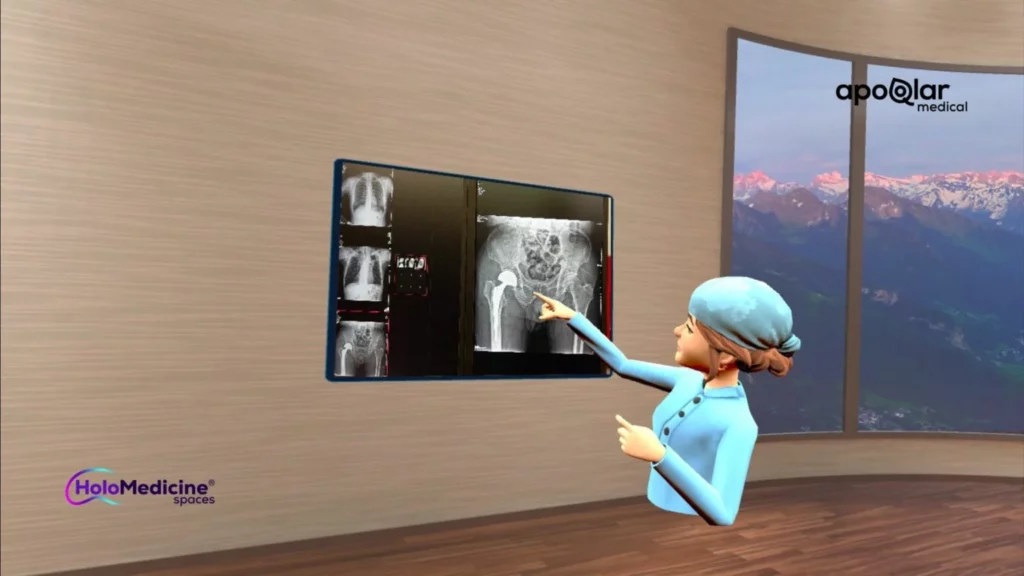
Adaptive Quizzes
Quizzes and assessments are tailored to each student’s knowledge level, helping them solidify their understanding of complex topics.
Guided Learning
AI-powered mentors in the VR environment offer personalized feedback, reinforcing students’ knowledge and providing targeted assistance on areas where they may need improvement.
These adaptive features ensure that students remain engaged and supported throughout their learning journey, making the flipped classroom model in HoloMedicine® Spaces a highly individualized and effective approach.
Benefits of the Flipped Classroom Model with HoloMedicine® Spaces
The flipped classroom model, especially when implemented of medical training in virtual reality, offers substantial benefits to medical education, making it an appealing choice for both educators and students:
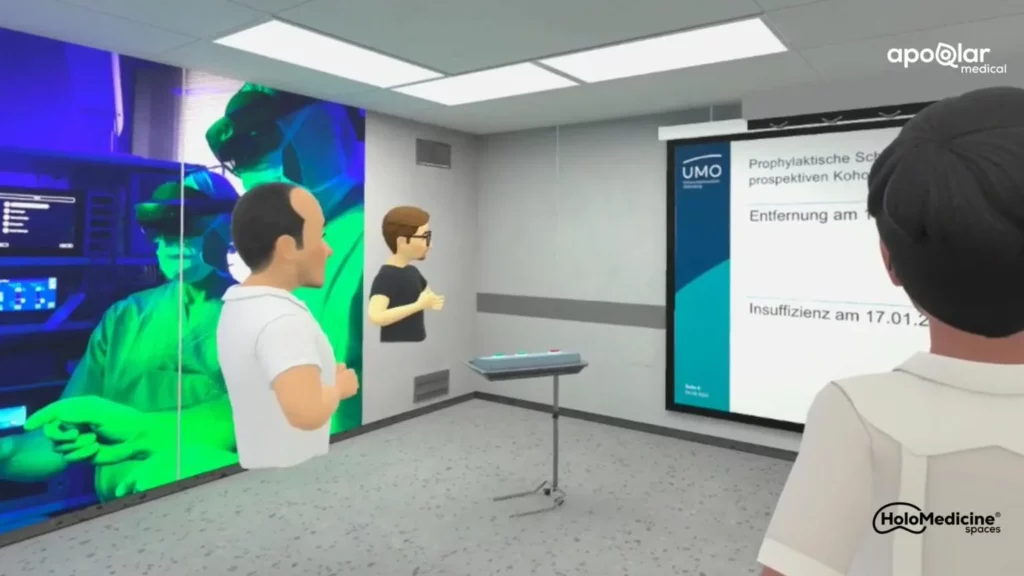
Deeper Understanding and Retention for Medical Training in Virtual Reality
Virtual Reality Medical content in HoloMedicine® Spaces helps students engage more deeply with complex topics, resulting in better retention and comprehension.
Flexible Learning Options
Students can access VR medical materials anytime and anywhere, making education more accessible and adaptable to diverse learning needs.
Enhanced Clinical Preparedness
Through interactive, hands-on VR experiences, students practice clinical skills in a safe, controlled environment, enhancing their confidence and preparedness for real-world application.
Increased Engagement
The immersive nature of VR, combined with the active learning structure of the flipped classroom, increases student engagement, encouraging active participation and collaboration.
Global Learning Community
By facilitating remote collaboration, HoloMedicine® Spaces enables students to connect and learn with peers and mentors worldwide, building a network of future healthcare professionals.
Final Thoughts for Medical Training in Virtual Reality
Implementing the flipped classroom model with HoloMedicine® Spaces represents a powerful advancement in medical education in virtual reality. This approach not only makes learning more engaging but also prepares students for the realities of clinical practice, equipping them with the skills and knowledge they need to excel.

By providing a comprehensive suite of VR tools for both pre-class preparation and in-class application, HoloMedicine® Spaces is helping educators transform medical training in virtual reality, making it more interactive, immersive, and effective than ever before. For institutions looking to elevate their medical education programs, the flipped classroom with HoloMedicine® Spaces offers a pathway to meaningful, future-ready learning.
You can also read about this: apoQlar medical Awarded Two-Year Grant to Supply HoloMedicine® Platform for Preoperative Surgical Planning and Education Enhancement at The Germans Trias i Pujol Hospital.
